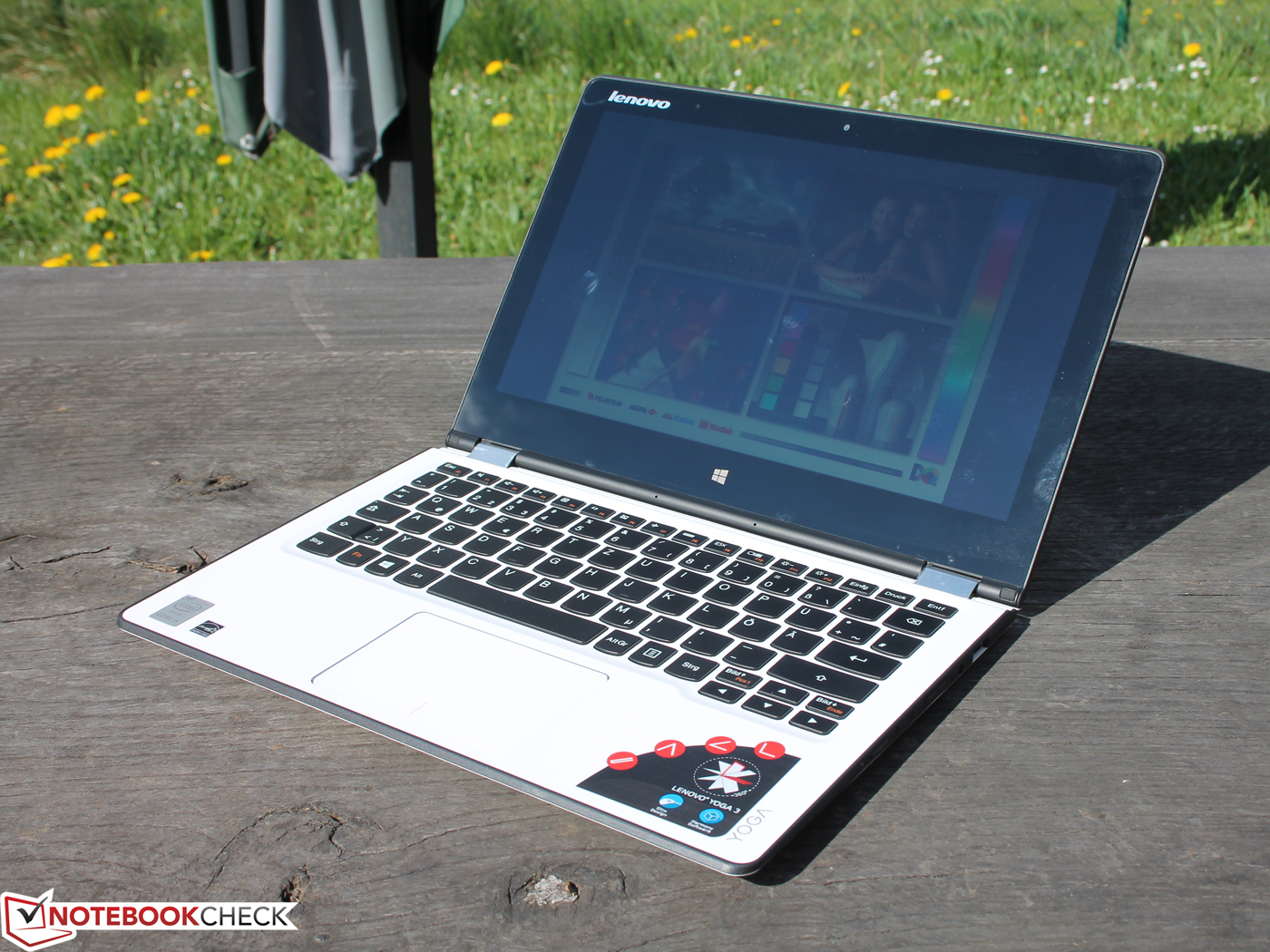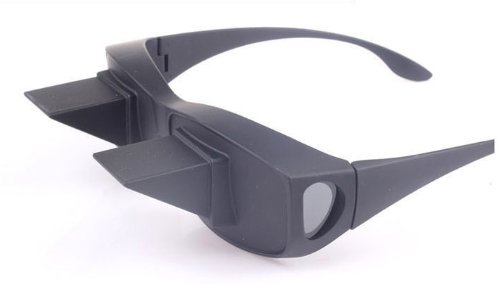A good, not astounding device.
The Lenovo Yoga Tablet 2 is a unique device. Lenovo has attempted to design a tablet that can be used in a variety of capacities for both business and pleasure. How does the tablet stack up to the competition? Read on to find out.
Design and Form Factor
The design of the Yoga Tablet 2 is both its greatest strength and weakness. First, let’s talk about the positive aspects of design. The device is right in the perfect range of size and weight to be a comfortable tablet computer. The review unit we received has a 10 inch diagonal screen and weighs in at 1.39 lbs. The screen is just big enough to be productive and light enough to be comfortable for one handed use while reading books or surfing the web.
Additionally, the side with the kickstand is rounded to create a hinge for the kickstand and creates room for a larger battery. This rounded edge actually adds an extra layer of comfort during one handed use. Holding a thin tablet with one hand is typically a dangerous act. However, with the added thickness of the rounded hinge, it gives you hand more surface area to hold and a better center of gravity.

The built-in Kickstand is something that sets the device apart from other tablets in both positive and negative ways. From a positive perspective, the kickstand provides a number of different ways in which the device can be positioned based on how you want to use the device. See the diagram above to see the different ways in which it can be used.
While the kickstand is relatively short in length, it is surprisingly steady when placed on a flat surface. However, that steadiness does not translate to use on your lap. Because of the short length of the kickstand when in “Stand” mode, it tends to be unstable when on your lap. I never felt fully comfortable using this on my lap like a laptop because of its instability.
Additionally, you’ll notice “Hang” mode in the above diagram. This is one of the most unique aspects of the Yoga Tablet 2’s kickstand. There is a built-in hole that enables you to hang the tablet from just about anything. Now you just need to add a new screw to your bathroom wall to enjoy your favorite television series from the bathtub. While not something that you are likely to use on a regular basis, it’s a nice added touch and I appreciate the fact that Lenovo is thinking outside of the box in innovating on their tablet.

The device can be purchased with a keyboard cover for an added cost. I’ve had a love/hate relationship with the keyboard. The keys work really well and provide the right amount of feedback to make typing feel remarkably close to a regular laptop. I actually found Lenovo’s keyboard more comfortable than the type-cover for my Surface Pro 3. While the keys are smaller, they are spaced out which prevents accidentally hitting a sister-key; a problem I constantly encounter when using my Surface Pro 3 type-cover.
Unfortunately, that’s about as far as my positive relationship with the keyboard goes. The magnet that attaches the keyboard to the tablet is not very strong. It doesn’t have that subtle snap of security that I feel when connecting the type-cover to my Surface Pro 3. Also, there are not grooves to hold it in place, so the keyboard slides left and right when moving and transporting the device. I had to be careful when holding the tablet to make sure I was gripping both pieces tightly to prevent dropping a piece due to the weakness of the magnet. The top of the keyboard surrounding the keys is a rubbery leather-like texture. Lenovo chose to make the mouse pad out of this same material which causes your fingers to stick to the touchpad a bit. Precise mouse movement and clicking isn’t impossible, but it’s not comfortable either.
The keyboard is charged using the same charger as the tablet and does not come with an extra wall-charger. While it does come with an extra cord to charge the keyboard through USB, the Yoga Tablet 2 does not have full size USB so there is no way to charge both devices simultaneously without either another computer or the purchase of another outlet-to-USB converter.
Additionally, the build quality of the tablet is in the medium range. When you pick up the tablet, it has weight to it and doesn’t feel cheap, but it doesn’t have the solidity and feel of the more premium tablet such as the iPad or Surface Pro series. This is to be expected as the device is not priced as a premium tablet being over $200 less than the base level iPad Air 2. Additionally, while the rounded edge makes it look more comfortable to hold, it does make the device lopsided. If you’re OCD when it comes to symmetrical design, like myself, this may cause a grey hair or two; but shouldn’t be a deal breaker for the majority.
Specs and Performances
When comparing the Yoga Pro 2 with other tablets on the market, it is reasonably well powered. The hardware specs are comparable to the Apple iPad Air 2. Below are the specs for the device:
Compared to the iPad Air 2, the Yoga Tablet 2 is very similar in specs. Both tablets sport 2 GB of RAM. The output of the processors are also very similar. The Yoga Tablet 2 utilizes a quad-core Intel Atom processor, while the Apple iPad Air 2 uses their proprietary A8 chip that has only 3 cores. Intel’s Quad-Core Atom processor (Yoga Tablet 2) clocks in at 1,866 MHZ while Apple’s A8 triple-core processor (iPad Air 2) clocks in at 1,500 MHZ.
On paper, the two devices should perform reasonably similar, however, it is the performance in the area of performance the the Yoga Tablet 2 falls behind. Disclaimer: One of the biggest drawbacks of the Yoga Tablet 2 is that it is running full-fledged Windows 8.1. This means that as soon as you get your hands on the tablet, you’re likely to want to do full-fledged Window’s activities. However, the device was not created for that purpose. The specs of the Yoga Tablet 2 clearly put it into the tablet category. It will perform as a severely under-powered laptop when you shift categories.
For example when running the desktop version of Google Chrome, if I have any more than 2 tabs open, the browser severely chugs. It has been a similar experience across the board for running full-fledged desktop programs, with the exception of Microsoft Office applications. (The Yoga Tablet 2 comes with a year of Office 365 for free.) However, apps that are tablet optimized and purchased through the Microsoft Store perform reasonably well. When browsing the internet ensure that you use the “Touch” version of Internet Explorer.
From a graphics perspective, the Intel HD Graphics driver scored in the bottom 10% of processors when it was benchmarked. These results were further proven during my testing while gaming. While less processor intensive games such as Sonic Dash and Asphault ran reasonably well, the visually impressive Modern Combat 5 (tablet optimized) suffered from severe framerate issues. Anytime there was any action on the screen, framerates dipped to an estimated 5-10 frames-per-second making the game virtually unplayable.
This is where Apple pulls ahead in the race. The A8 chip has some impressive 3D graphical processing capabilities that enable it to run 3D intensive games such as Modern Combat without an issue. Also, iOS is fully optimized for its tablets. As a result, the iPad Air 2 runs significantly better than the Lenogo Yoga Tablet 2 overall.
Below is the Benchmark comparison of the Yoga Tablet 2 to other comparable devices (Yoga Tablet 2 in Red):
The Yoga Tablet 2 performs within expectations of other devices using the same processor. While outperforming other devices in area such as Aggregate Option Pricing Performance and Aggregate Shader Performance, it misses the mark in Device Score, Drive Score, and Aggregate Memory Performance.
The screen of the Yoga Tablet 2 outputs in full HD resolution (1080 X 1920 pixels). The colors are crisp and accurate. The backlight is sufficiently bright for almost any situation. Compared to other tablets on the market, however, the screen is of lower resolution . The iPad Air 2’s retina display outputs in 2048 X 1536 pixels. As a result, the picture is not as crisp as the iPad Air 2, but likely only noticeable to those who put high emphasis on visual performance.
The sound and battery are the device’s saving grace from a hardware perspective. Battery life is as advertised offering an impressive 9.62 hours of Wi-Fi browsing at 40% screen brightness. Additionally, the device utilizes the Dolby Digital Plus sound driver and has speakers that offer a surprising level of clarity. While not the loudest tablet speakers on the market, they certainly get the job done, and do it well.
In summary, if you treat the Yoga Tablet 2 as a tablet, it will serve you reasonably well as a tablet. If you try to use it as a compact laptop, you will likely be disappointed. Also, the tablet is not great for 3D intensive games and applications. Where you will be impressed with the hardware is in the longevity of the battery and the clarity of the sound.
“Smash Factor”
When reviewing devices we like to look for whether a device has what we call the “Smash Factor.” This can be earned by either showing incredible innovation or overall outstanding performance. While the Lenovo Yoga Tablet 2 does a number of things right and definitely has something to offer, the device doesn’t earn the “Smash Factor” award. Feeling largely under-powered (primarily being caused by running Windows) hinders the overall experience. However, the Yoga Tablet 2 does do quite a few things right such as battery life, sound, keyboard, and ergonomic design. However, we wouldn’t consider it an off-the-charts-stellar contender. If you’re in the market for a budget tablet that can hang on your wall and perform as a tablet, this could be the device for you. Click here to access on Amazon.
What do you think of Lenovo’s Yoga Tablet 2? Tell us why you would/would not buy the device in the comments below





































